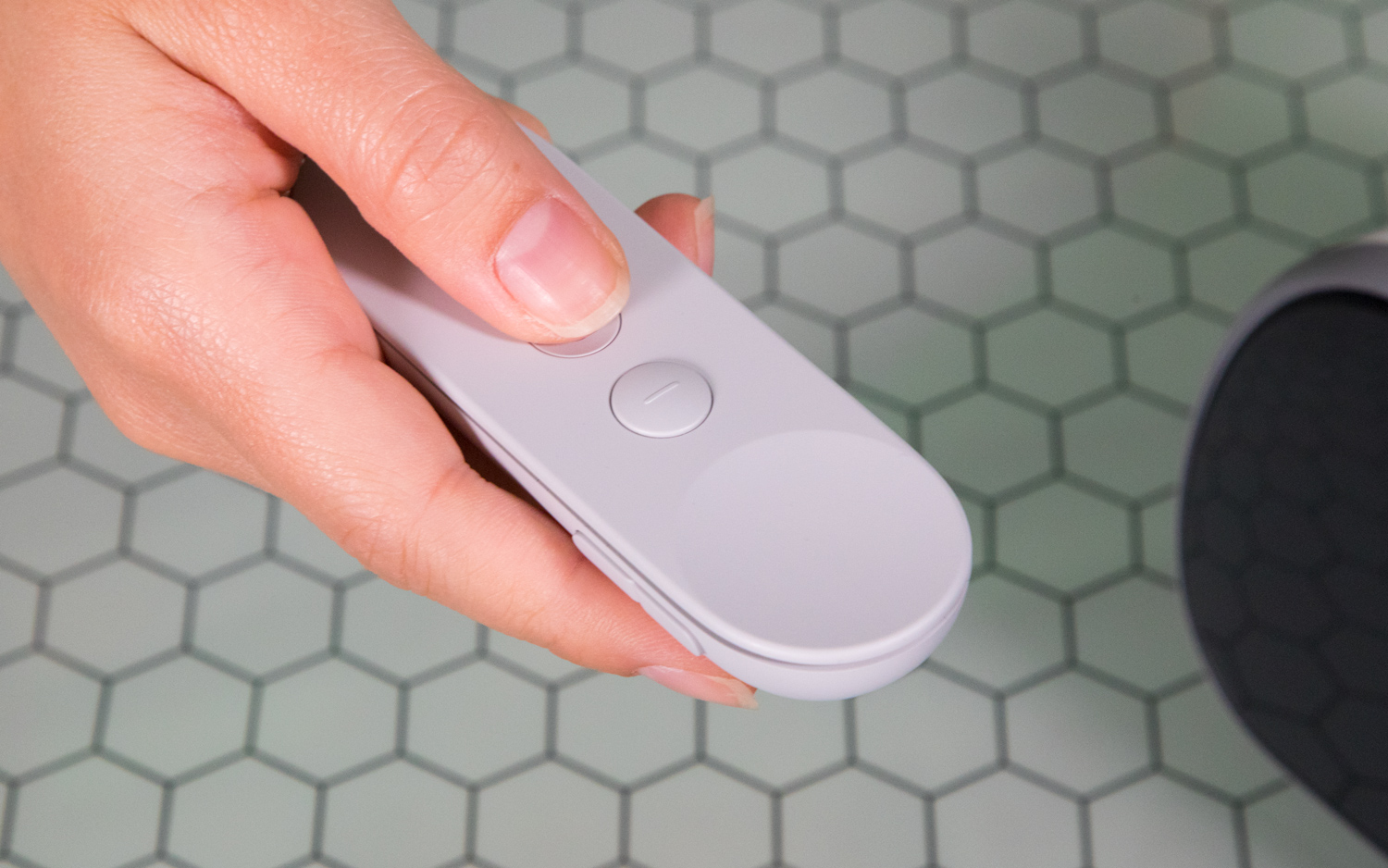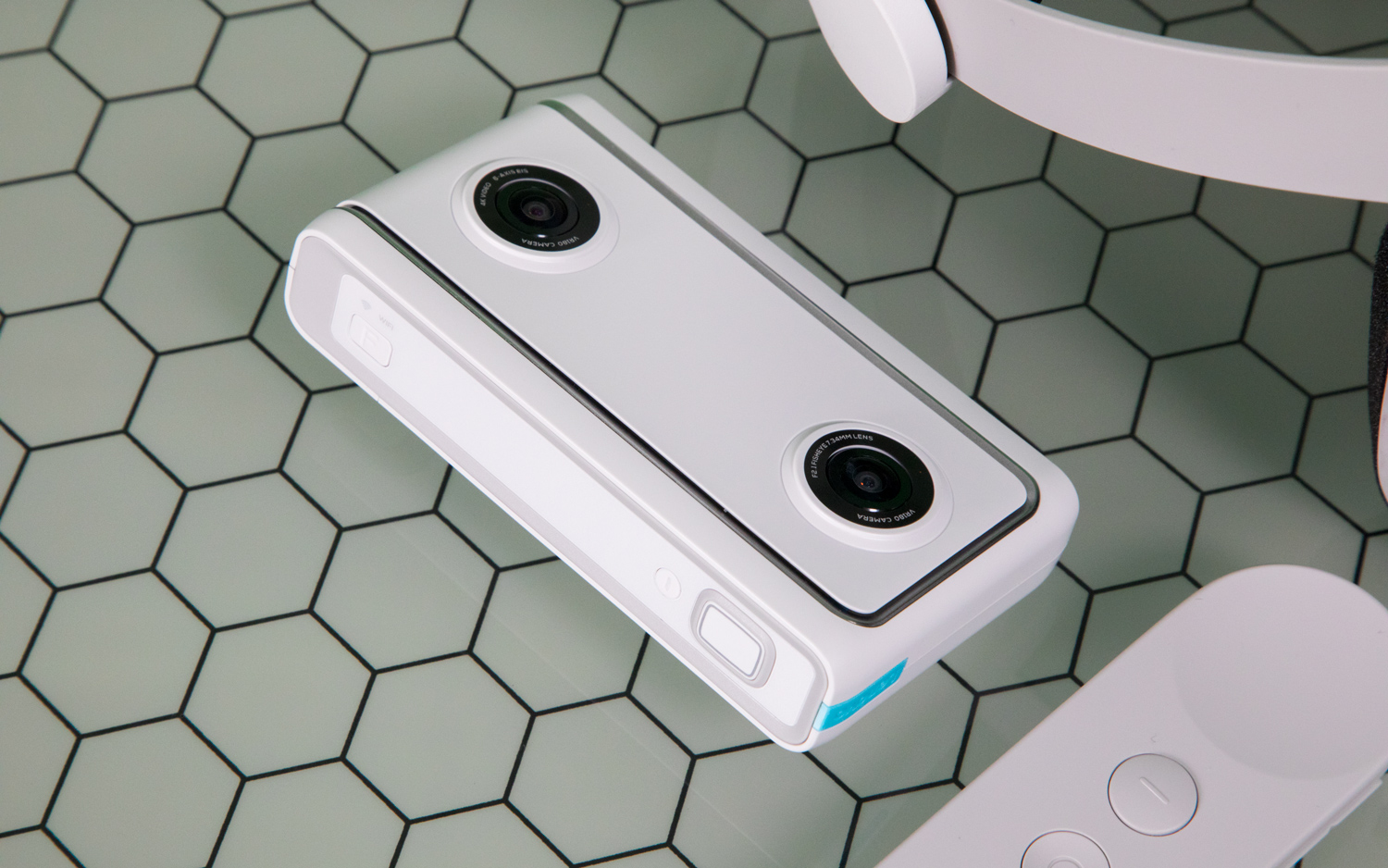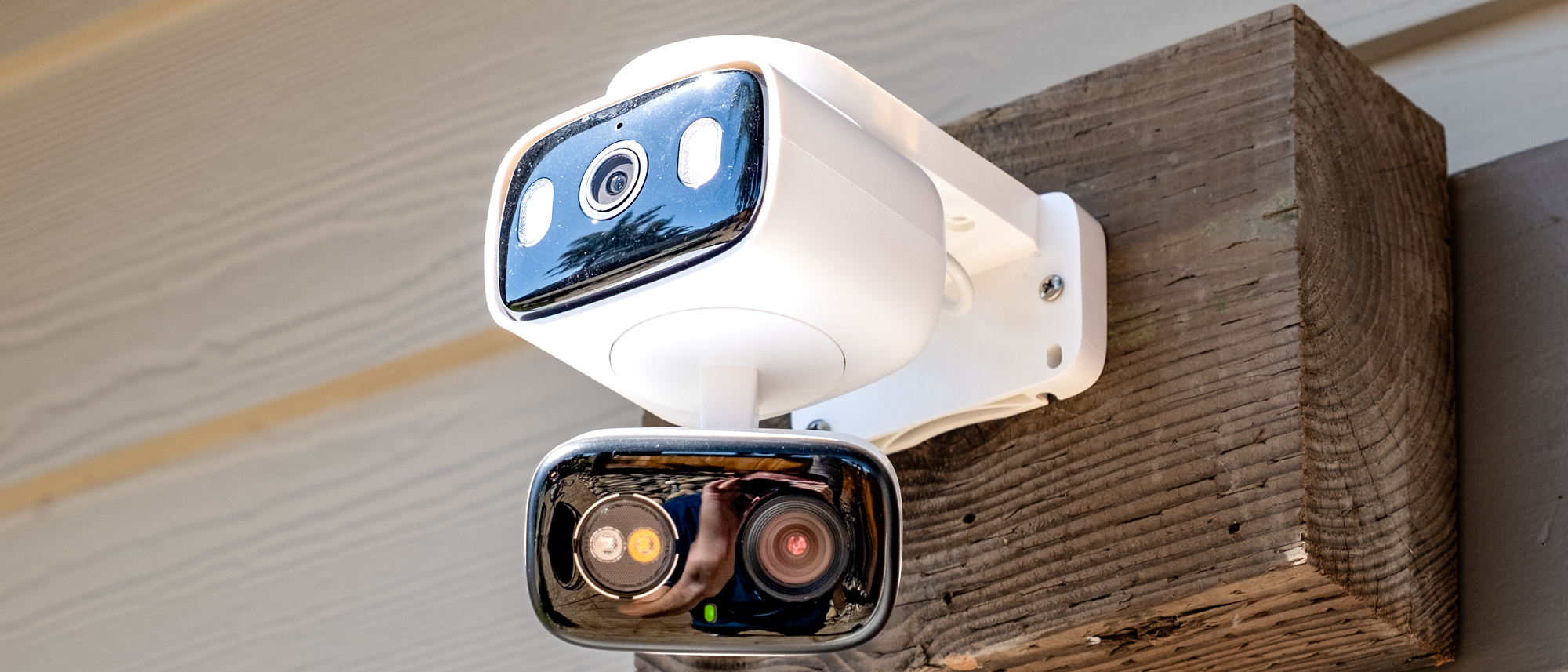Tom's Guide Verdict
The Lenovo Mirage Solo with Daydream delivers a true stand-alone virtual-reality experience with the ability to move around, but it has some drawbacks.
Pros
- +
A truly wireless, stand-alone VR experience
- +
WorldSense technology enables (limited) movement
- +
Excellent battery life
- +
Can cast VR Experience to TV
- +
Expandable microSD slot
Cons
- -
Heavy and bulky
- -
Smaller content library than Oculus Go
- -
No built-in speakers
- -
Expensive
Why you can trust Tom's Guide
For a while now, there have been limitations on what you could do in virtual reality. You could walk around the room, but you were tethered to a PC. Or you could ditch the wires, but couldn't move, and had to rely on your smartphone for power. Lenovo and Google are bridging the gap with the Mirage Solo with Daydream headset.
For $399, you get one of the best VR headsets that is free of cords and smartphones that affords you limited movement by way of its integrated sensors and proprietary technology. However, VR aficionados looking for a cordless room-scale experience may feel the Solo comes up short, and the content options are lacking compared with the cheaper new Oculus Go.
Design
Great Scott! The Mirage Solo looks like something Marty McFly would be wearing in Back to the Future Part II. The bulk of the headset's body is made from matte plastic in a shade Lenovo calls Moonlight White, with gray and black accents throughout the design.

And while white is the primary color, the front of the head-mounted display (HMD) is made of glossy black plastic with a thick gray border. A pair of Google's WorldSense tracking sensors are prominently centered in the shiny surface, waiting to take you on a virtual adventure.

The sides of the headset are white and house a USB Type-C port and a port cover hiding a microSD slot (expandable up to 256GB) on the left, directly below a Google Daydream emblem stamped in gray. Along the right sits buttons for power/sleep and volume with a headphone jack. Along the bottom, you'll find a button to adjust how close the faceplate is to your face.

A slim but sturdy gray plastic piece protrudes from the top of the headset and forms part of the headband. The rest is completed by a thick white piece of plastic with an adjustment knob, similar to what you'd find on a PlayStation VR, to help ensure a comfortable, secure fit.
At 22.7 ounces, the Mirage Solo is the heaviest VR headset on the market.
A curved piece of white plastic atop the gray fixture follows the natural curve of my forehead. And like the other white part of the band, it has a thick foam cushion wrapped in black, breathable fabric. The interior of the headset features a pair of lenses framed by black foam attached to gray flexible plastic.
Get instant access to breaking news, the hottest reviews, great deals and helpful tips.

At 22.7 ounces and 10.6 x x 8 x 7.1-inches, the Mirage Solo is the heaviest VR headset on the market. It's even heavier than PC-powered head-mounted displays, like the Oculus Rift (16.6 ounces, 7.2 x 4.5 x 3.5 inches) and the HTC Vive (19.9 ounces, 7.5 x 5 x 0.4~5 inches). It makes mobile HMDs like the Oculus Go (16.5 ounces, 7.5 x 4.1 x 4.5 inches), Google Daydream View (9.2 ounces, 6.6 x 4.6 x 3.9 inches) and Samsung Gear VR (12.1 ounces, 8.2 x 4.8 x 3.9 inches) seem like featherweights in comparison.
Comfort
Despite the padding and the adjustable headband, I could really feel the weight of the Mirage Solo against my face shortly after putting it on. It wasn't uncomfortable, per se, but there was noticeable pressure along the apples of my cheeks.

The feeling became much more present once I switched from my contact lenses to my glasses. I attempted to slide the headset outward so it didn't rest against my face too much, but that left the image out of focus. But ultimately, I wore it for 2 hours with no ill effect.
Setup
Since I'm reviewing a test version of the Mirage Solo, Lenovo sent it over with specific demos pre-loaded and no real setup. That won't be the case for you. Similar to the Daydream View, before you start playing with the headset, you'll have to do a wee bit of setup to calibrate the controller and headset.
It takes about 4 to 5 minutes, and is actually charmingly fun. For instance, I used the controller as a flashlight to spot cute woodland creatures as they make their way through a nighttime forest. In another, I pressed the top button on the controller to choose a specific rock or log. From there, I lifted my chosen object to reveal desert critters, including a few mice and a bug or two. Best of all, the Mirage Solo's setup process is totally self-contained, unlike the Oculus Go that requires initial assistance from a smartphone app.
MORE: Best VR Headsets
One thing the Daydream platform is still missing is Voice Search, which is confusing to me since Google is putting the feature in just about everything these days, including headphones.
Specs
Just like Go, in order for Lenovo and Google to cut the cord, they had to outfit the Mirage Solo with its own processor — namely a Qualcomm Snapdragon 835 processor. This is the same CPU found in older flagship phones like the Galaxy Note 8 and Google Pixel 2. And while it's not rocking the current Snapdragon 845 found in the Galaxy S9, the Mirage Solo's 835 is more powerful than Go's Snapdragon 821 chip. It also has more RAM at 4GB, compared with the Go's 3GB.
Regarding the lenses, the Mirage Solo uses a pair of Fresnel-style lenses, similar to the Go and the Rift. Fresnel lenses, if you're unfamiliar with the term, essentially means a series of concentric circles are etched into the lenses, offering better detail than a conventional lens. Both the Mirage Solo and the Go have 5.5-inch, 2560 x 1440 displays. But the Mirage Solo's panel is a QHD IPS display with 70 percent color gamut, while the Go has a WQHD, fast-switch LCD display.
Regarding resolution, both devices deliver 1280 x 1440 pixels per eye, which is better than the 1080 x 1200 per eye (2160 x 1200) provided by the Rift and the Vive. However, the Mirage Solo has only a 75-Hz refresh rate. That's better than the Go ,which can vary between 60-72 Hz depending on the app, but not the Vive or the Rift (90-Hz).
Where the Mirage Solo does match the PC-powered rigs is in its 110 degree field of view, which affects how immersive a VR experience feels.
Controller
That "with Daydream" logo on the headset isn't just for show. The Mirage Solo uses the same light-gray plastic controller as the Daydream View. Thanks to its rounded sides and bottom, the peripheral fits comfortably in my hand.

The controller's beauty lies in its simplicity. The large circular depression at the top of the controller makes for a quick and responsive touchpad, with the Apps and Home buttons directly below it. A quick press of the Home button returns you to the main screen, while a longer press recenters both the controller and the headset orientation. A pair of volume buttons sit along the top right of the peripheral, and there's a USB Type-C port at the bottom to recharge.
Audio
Alas, Mirage solo lacks integrated speakers, a feature I really enjoy on the Oculus Go. Instead, you'll have to rely on a pair of headphones and the audio jack on the side of the device, otherwise you're going to have a rather muted experience.
Using the included pair of earbuds, I found the HMD's audio provided decent sound. However, I had to jack the volume up to 75 percent to really get that immersive feeling I was looking for.
The Mirage Solo lacks integrated speakers, a feature I really enjoy on the Oculus Go.
The Mirage Solo doesn't have the spatial sound I was hoping for, but when I started shooting off the canons in The Narrows, I enjoyed the resulting sound of wood splintering as the cannonball connected with an enemy vessel.
Interface
Google recently launched Android 8.0 (Oreo) as well as the Daydream 2.0 Euphrates update. So in addition to the familiar floating-tile interface set in the woods from the original launch, you get a large set of tiles of suggested apps above your recent programs. The main home screen is set in a lush, green valley complete with a majestic waterfall, with subsequent pages of tiles sporting different nature-themed scenes.
The Library menu displays all your purchased apps on a 5 x 3 grid. Selecting the Settings menu reveals a pair of clocks with the date, along with Wi-Fi and battery indicators. Below that are icons to disable the Wi-Fi, recenter the headset and controller, mute the audio and change the controller orientation from right to left.
MORE: Oculus Rift vs. HTC Vive: The Vive Is a Better Buy (for Now)
Now that Android 8.0 has debuted, you have the ability to show your friends what you're seeing in VR via Cast, thanks to the Daydream 2.0 update. It's a fairly simple process to initiate. After I enabled casting on my 43-inch LG television, I went to the settings menu and hit Cast. The Mirage Solo searched and found my television and gave me a prompt to confirm it was the correct device. From there, my boyfriend was yelling out possible solutions to get me out of a tight spot in Keep Talking and Nobody Explodes.
VR Experience
Despite having higher resolution lenses, its lower refresh rate places the Mirage Solo in the same boat as the Oculus Go - solid visuals, but not enough to surpass the Rift or Vive. I played Wands on both the Mirage Solo and the Go, and saw approximately the same level of detail and color. Thankfully, you don't get much of a screen-door effect on either system, and they're both a step above such mobile headsets as the Gear VR and Daydream View.
But what sets the Mirage Solo apart from the pack are the integrated cameras and sensors in the faceplate and Lenovo's WorldSense Motion Tracking technology. WorldSense enables the wearer to move around in virtual space with six degrees of freedom. That means when I was skiing downhill at breakneck speeds on an otherwise impractical course in Extreme Whiteout, I could physically duck to avoid getting clocked by a low-hanging branch.
What sets the Mirage Solo apart from the rest of the pack is WorldSense, which enables the wearer to move around in virtual space with six degrees of freedom.
That doesn't mean, however, that you can go walking around the room like you would in the Vive or the Rift. While the sensors map the environment, there's no virtual barrier system like Vive's Chaperone or Oculus' Guardian to warn you you're about to walk into a wall or a couch. You can move, but you are confined to one relative spot. Still, it's a big step forward for mobile sets where you have to invest in a swiveling chair to get the most out of your VR experience.
Apps and Games
The Mirage Solo relies on the Daydream library for content. To date, the catalog has over 350 games and apps with over 70 titles optimized for WorldSense. It's a nice start, but it is woefully behind the Go and the Gear VR, which also share a library and have over 1,000 titles in the cache.
MORE: Google Cardboard Apps: Top Picks
You'll find apps like Hulu and Netflix and games like Rez Infinite and Wands in both libraries. But titles like action role-playing game Twilight Pioneers (free), space-exploration puzzler Eclipse: Edge of Light ($8.99) and the rogue-like adventure title Lola and the Giant ($10.99) are a few of Daydream's top-tier exclusive offerings.
Battery Life
Lenovo put a 4,000-mAh battery in the Mirage Solo and claims it last 2.5 hours with continuous use. However, after playing Rez Infinite starting at 11 p.m. and switching over to Narrows at 11:30 p.m., I wrapped up at 1:22 a.m. with 46 percent remaining. That meant the headset lasted 2 hours and 22 minutes, and still had plenty in the tank.
Mirage Solo Camera
Although you can use the headset to experience Google Daydream content, Lenovo and Google also want you to create your own. That's why they create the Mirage Camera with Daydream. Available for $299.99, this companion peripheral captures stills and video in 180 degrees with stereoscopic 3D effects that can then be viewed in either 2D or 3D on the Mirage Solo, Daydream View or Google Cardboard.

At first glance, the 4.9-ounce, 2.2 x 4.1 x 0.9-inch camera looks like a regular, albeit attractive, point-and-shoot. Similar to the Mirage Solo, the Camera has a white plastic shell with gray plastic chrome accents. A flap along the left rear of the device lifts up to reveal the USB Type-C charging port and the microSD card slot. To the right is the distinctive Daydream branding. At the top, you have the Power and Shutter buttons along with the Function button, which allows you to switch between Photo, Video and Livesteam modes.
At the front of the device sits a pair of 13-megapixel fisheye cameras. On the bottom of the camera you'll find a tripod mount. You'll notice I didn't say anything about a viewfinder. That's because there isn't one. In my meeting with Google and Lenovo, I was told the viewfinder was unnecessary as the camera is designed to capture anything that’s in front of you exactly as you see them.

I decided to put that to the test, snapping stills and video around Bryant Park, and the Solo Camera performed as advertised. A picture I took of the William Cullen Bryant statue was bursting with color and detail. It even captured the blue tie someone had placed on top of the statue's head. My favorite part of the shot is the flowers leading up to the statue. The 3D-stereoscopic effect made it look like you could almost walk up the pathway and remove the tie, especially when looking at the image in the Mirage Solo.

A video I took of a man playing a flute in the park looked like he was playing just for me. Turning to the left or right, I could see people walking by us, with one lady stopping to enjoy the mini-concert. However, since it's a 180-degree shot, turning past that point reveals just a dark gray void.
While I typically appreciate tiny gadgets, I noticed that my index or middle fingers inadvertently made it into some of the shots.
Bottom Line
Headsets like Lenovo's Mirage Solo with Daydream put us firmly in the mid-generation of the VR evolution. For $399, you get a head-mounted display that is truly independent of your smartphone. From the time you take it out of the box, it's just you, the controller and a virtual world. Although, the image quality is a step below what you'd find on PC-powered headsets like the Oculus Rift and HTC, the Mirage Solo goes a couple of steps beyond its main competitor, the cheaper $199 Oculus Go, by truly cutting the cord and allowing some movement. It isn’t room scale by any means, but still a major step forward (pun intended) for the future of virtual reality.
Google's going to have to step on the gas as far as pumping out content, however. The Oculus Go and the Samsung Gear VR have the Mirage Solo severely outmatched when it comes to games and apps. The Mirage Solo also suffers from a bulky design that requires headphones, while the Oculus Go is sleeker and has built-in speakers. And while the Mirage Camera seeks to bridge the gap with user-generated content, it's hard to imagine many consumers forking out an additional $299 for the privilege.
Despite some flaws, the Lenovo Mirage Solo is a very good example of where the future of VR is headed — a place where wires and smartphones are a thing of the past. But there's still plenty of room for improvement.
Credit: Shaun Lucas/Tom's Guide

Sherri L. Smith has been cranking out product reviews for Laptopmag.com since 2011. In that time, she's reviewed more than her share of laptops, tablets, smartphones and everything in between. The resident gamer and audio junkie, Sherri was previously a managing editor for Black Web 2.0 and contributed to BET.Com and Popgadget.
